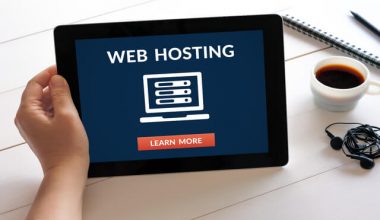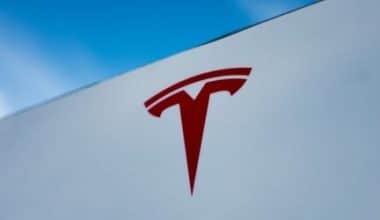Executives today often use forecasts as a basis for practically all of their decisions. If managers have to deal with seasonality, rapid changes in demand levels, price-cutting maneuvers of the competition, strikes, and big swings in the economy, they must have reliable forecasts of future demand and trends. The more they understand the fundamentals of forecasting, what it can and cannot accomplish for them at a particular moment, and which techniques are most suited to their needs, the better equipped they will be to deal with these challenges. In this article, we explain in detail how forecasting works in the business world, the types, and why it is important in operations management. Reads On….
What is Forecasting?
Forecasting is a technique for predicting the future by analyzing past patterns and interpreting them to anticipate the likely direction of future trends.
Forecasting in other words is a process that produces accurate predictions of the future course of trends through the use of historical data and facts( as inputs).
It’s a tool for making plans and setting budgets so businesses can face whatever the future may bring with more confidence. In most cases, companies use forecasting to figure out where to put their money or how to prepare for future costs. This is usually determined by the anticipated interest in the provided services or products.
While planning for the future and estimating costs might be the main goals of forecasting in a business, there are also a variety of reasons why organizations utilize these techniques.
How Forecasting Works
Forecasting is a tool that investors use to figure out how things like sales projections will affect the share price of a company. Companies that require a broad view of their activities over time generally use forecasts as a valuable benchmark.
Forecasting is used by equity analysts to project the future course of important economic indicators like GDP and unemployment rates. To wrap things up, statisticians may employ forecasting to assess the likely impact of a change in company operations management. For instance, forecasting might be used to gather information about how adjusting business hours or other working conditions affect customer satisfaction and employee efficiency. Then, these analysts make earnings forecasts, which are often added together to make a consensus figure. Earnings announcements may notwithstanding have a significant effect on a company’s stock price if the figure falls short of expectations
Generally, the goal of every good forecast is to shed light on an issue or group of data. Before figuring out the forecasting parts, economists must first say what they think about the situation being looked at. A proper data set will be chosen and utilized for data modification, depending on the items that will be evaluated. Once the data has been finally analyzed, the analyst can then arrive at a forecast. The last step is the verification phase, where the prediction is compared to what actually happened. This helps make a more accurate model for making predictions in the future.
What Are Forecasting Tools?
Forecasting basically lets a company look at past trends and its current situation to figure out what will happen in the future. Forecasters make use of business forecasting tools to anticipate sales, budgets, and other things. You can set and achieve goals if you have a clear understanding of the potential of your company using data and industry trends.
If you want to achieve your goals in a strategic way, you need to have access to reliable information. If you want to identify, gather, and analyze the best data to use in your planning, you’ll need the proper tools. Hence, if you’re working on business forecasting, you can choose from the following modern, trustworthy tools;
- QuickBooks
- Demand Works
- Tableau
What Is the Main Purpose of Forecasting?
While predictions focus on what will happen in the future, forecasts examine how latent currents in the here and now may portend shifts in the trajectory of businesses, societies, and the global community. In light of this, the major objective of forecasting is to identify the complete range of possibilities, rather than a narrow set of false certainties.
What Are the Forecasting Techniques?
Generally, you can make use of either qualitative or quantitative techniques to approach forecasting.
#1. Quantitative Techniques of Forecasting
Forecasting with quantitative approaches makes use of statistical data rather than subjective judgments from experts. Time series approaches, discounting, the study of leading or lagging indicators, as well as econometric modeling that attempts to establish causal relationships are all examples of quantitative forecasting models.
#2. Qualitative Techniques of Forecasting
For more specific predictions, qualitative forecasting models can be helpful. These models rely heavily on judgments from experts and are useful only in the short term. Some of the most common examples of qualitative forecasting models include interviews, site visits, market research, polls, and surveys (which may employ the Delphi technique). All of these basically rely on aggregated expert opinions.
In some cases, it may be challenging or time-consuming to collect the necessary information for a qualitative study. The chief executive officers of major corporations rarely have time to speak with individual investors over the phone or give tours of their facilities. However, one may still be able to piece together managers’ track records, tactics, and beliefs from news stories and the wording published in companies’ filings.
a)Time Series Analysis
Time series analysis examines past information and the relationships between different variables. Forecasts are made using these statistical correlations, and confidence intervals are calculated so that the possibility that actual outcomes will fall within that range may be understood. Regardless, the success of any forecasting technique is not guaranteed.
The Box-Jenkins Model is the basic statistical method for predicting certain time series using historical data. It utilizes autoregression, differencing, and moving averages to make predictions. Rescaled range analysis is another technique for identifying and assessing the presence of persistence, unpredictability, or mean reversion in time series data. To determine if a trend is sustainable or likely to reverse, one can project a future value or average for the data using the rescaled range.
Time series projections frequently entail trend analysis, cyclical fluctuation analysis, and seasonality-related difficulties.
b) Econometric Inference
Although determining causation is difficult and frequently erroneous, looking at cross-sectional data to find correlations between variables is another quantitative approach. Econometric analysis, which frequently makes use of regression models, is the method analyst uses to study these kinds of phenomena. If possible and available, one can also make use of methods like the use of instrumental variables to aid in the development of more convincing causal assertions.
An analyst might for example examine revenue and evaluate them against economic indicators like inflation and unemployment. To ascertain the relationship between these many variables, one can analyze the modifications to financial as well as statistical data. Thus, a sales forecast may take into account a variety of factors, including total demand, interest rates, market share, and advertising budget (among others).
What is Business Forecasting?
Business forecasting aims to make educated assumptions or forecasts regarding the future status of certain business measures, such as sales growth, or predictions for the entire economy, such as GDP growth in the upcoming quarter. To increase accuracy, business forecasting uses both quantitative and qualitative methods. Managers utilize projections for internal goals, such as deciding where to put money and whether to grow, expand, or sell off assets. They also provide public estimates, such as profit guidance, that look into the future.
Why Is Forecasting Important?
It is advantageous in many situations, including corporate management, to be able to correctly foresee future trends and events. Reasons why accurate forecasts are so valuable include:
#1. Estimating a New Business Venture’s Likelihood of Success
Proper forecasting can disclose important information when beginning a new firm that could affect the future performance of the enterprise. Forecasting helps entrepreneurs foresee factors like the intensity of the competition, the potential for demand for a good or service, and the trajectory of the industry sector. Proper forecasting may also help discloses some of the dangers and challenges that a new business encounters.
#2. Estimating a Company’s Financial Needs
One of the most crucial applications of forecasting is estimating a company’s future financial needs. By projecting future sales, capital requirements for product development, expansion expenditures, and other expenses, it can assist a business plan for its financial future.
#3. Facilitating Sound Decision-Making Amongst Managers
Many managerial choices are made with the help of reliable forecasts. There are a number of factors that can affect a company’s success, regardless of its size, including the economy, the availability of skilled workers, and the cost of raw materials. Decision-makers in an organization rely heavily on forecasts to help them plan for the future.
#4. Ensuring the Consistency of the Company’s Operations
Accurate forecasting can shed light on key details about potential income and expenditure. The management of a corporation can improve the efficacy and precision of future planning by estimating the inflow and outflow of financial resources over a certain time period.
#5. Increasing the Chance That a Business Effort Will Succeed
A company’s prosperity frequently rests on such factors as razor-thin profit margins and strategic use of resources. The number of raw materials required, the appropriate budget for each company’s department, and the number of future sales are only some of the key parameters that may be predicted with the help of forecasting. Management can use these numbers to prioritize products and services and allocate resources more effectively.
#6. Encouraging Teamwork in the Workplace
The company’s department managers from every division, as well as other employees, must coordinate and work together to gather and analyze the data for forecasting to be successful. This turns the entire process into a collaborative effort, fostering greater cohesion and team spirit.
#7. Making Workable Plans for the Future
The ability to accurately predict future events is crucial in order to create actionable plans. Accurate forecasting is directly related to good planning, which may be done at any time scale from the immediate to the distant future.
#8. Assisting a Business to Grow
Forecasting provides managers with the knowledge they may utilize to identify any process flaws inside the firm. The company’s managers have the necessary instruments to address any weaknesses before they have an impact on profitability by anticipating future flaws.
Why Is It Called a Forecast?
In this context, the term forecast means a future prediction that is made in advance. The act of determining or anticipating the outcome of something as a result of the study and analysis of relevant evidence.
It means having insight into potential outcomes and making plans to mitigate any negative effects.
How Do You Do Forecasting?
Basically, you can predict future values, revenues, expenses, costs, trends, as well as other related indicators with forecasting. And to do that, you can make use of one of the four main forecasting techniques;
- Straight-line method
- Moving average
- Simple linear regression
- Multiple linear regression
Types of Forecasting in Operations Management
Irrespective of the time horizon, companies utilize one of three main types of forecasting;
#1. Economic Forecasts: deals with the discussion of the business cycle Along with other indices, they forecast housing starts, inflation rates, and money supply.
#2. Technological forecasts: this type tracks the speed of technological advancement. This keeps businesses up to date with trends and may lead to the creation of intriguing new goods. It may be necessary to prepare ahead for new facilities and equipment that may be needed because of new products.
#3. Demand forecasts: take care of the company’s wares and try to predict how much demand there will be for them. These are also known as sales projections and serve several functions. They are used as inputs in future planning for resources like money, people, and advertising in addition to driving things like production schedules and capacity levels.
What Are the 8 Steps of Forecasting?
Market forecasting is a crucial instrument for anticipating future events but is occasionally undervalued as a component of corporate management. With forecasting, business executives can greatly benefit from knowing, or at least having some notion of, future trends to assist them to and make wise company decisions. That being said, here are the 8 basic steps to business forecasting;
- Pinpoint the Problem
- Determine the Variables
- Choose Your Forecasting Model
- Test the Data market forecast
- Cut Out Wasteful Data
- Data Analysis market forecast
- Verification market forecast
- Track the Progress of Your Forecasting Strategy
How to Do Forecasting in Excel?
To do your forecasting in Excel;
- On the Data tab, in the Forecast group, click Forecast Sheet
- In the Create Forecast Worksheet box, select either a line chart or a column chart for the visual representation of the forecast.
- In the Forecast End box, select an end date, and then click Create
What Is Forecasting in Planning?
The process of forecasting is a method that makes use of historical data as inputs to provide estimations that are both accurate and informative in determining the path that future trends will take. Businesses use forecasting to decide how to spend their budgets and make plans for upcoming expenses.
Conclusion
Making smart business choices generally requires accurate forecasting. Organizational leaders, no matter how big or small can benefit from forecasting because it allows them to foresee shifts in key performance metrics like sales projections and customer behavior. Although the ability to predict the future is vital, doing so well takes specialized knowledge and accurate information.
Related Articles
- Business Forecasting Definition, Methods, Examples, Types (Updated)
- What is Sales Forecasting? Methods and Real-world Examples
- FORECASTING METHODS: Definitive Guide to Forecasting
- Demand Forecasting: Methods, Examples, Models (+ Detailed Guide)
- DATA ANALYSIS PROCESS: Methods, Process, And Types





